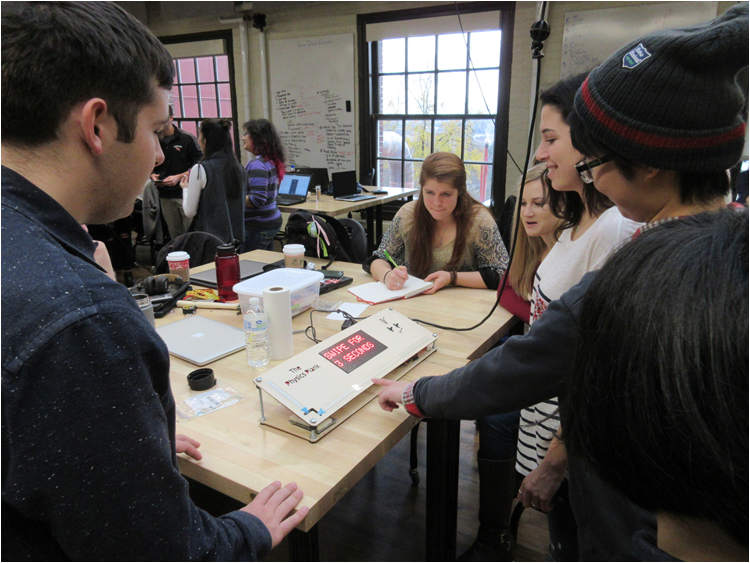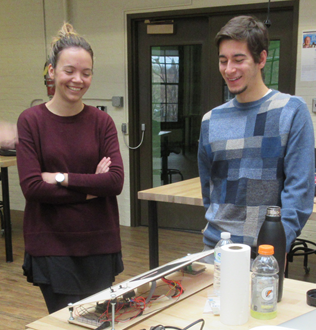User Feedback
Dec 5th, 2016 by hayesb2
User experience testing indicated that middle school-aged students are fascinated by the device when first using it. They enjoy the bright LED matrix and the way it responds to their movement. They like the different colors that appear and shapes they can create based on changing the way they move across the sensor. With such a new device, giving kids time to simply figure out how the device worked themselves and become familiar with it was important to creating intrigue. During testing, many kids had other suggestions and ideas about how the ribbon sensor and LED matrix can be used, or how the device as it is could possibly be improved. Some of their suggestions were including a speaker, including a drawing function like a digital Etch-A-Sketch, and adding a coordinate plane.
Despite their initial interest, however, the device was too simple to keep kids engaged. The single functionality at the time of testing of the device creating a wave as the light moves across the matrix is only fun for a few minutes. Future iterations of this device must be able to incorporate numerous functions that relate to each other in order for the device to be make sense as a learning device in schools.
Additionally, after discussing with both students and the teacher, it became clear that the physics concepts we were trying to convey through the plank (wavelength, frequency, etc.) are not covered in detail in 8th grade, the age group we originally were designing for and were able to test on. It is a topic tested on by state exams, but very minimally. In order for the Physics Plank to be a successful device, we must either redefine the concepts we want it to convey or design and test for an older group of students where wavelength and related concepts are covered more extensively. Since the first iteration of this device was so simple, it was unclear before how big of an issue this is.
Overall, the second iteration was a great improvement from the first in terms of user experience and functionality. The board slipped on the table far less during use, the kids were far more engaged thanks in large part to the bright LED matrix, and there was greater potential for functionality. Moving forward, there needs to be increased functionality so kids can use the device to learn a larger set of concepts, and improvement to durability, wiring, and preventing sliding will be other ares that can be improved.
In addition to the middle school students, the Physics Plank 2.0 went through user testing with our own college-age classmates. They had a similar response to the middle school kids in that they thought the device itself was cool, fun, and engaging. One student said that the LED ” display is captivating”. They had some new ideas the middle school kids did not mention, such as including some kind of tutorial or instruction describing how to use the device. They also said it would be a good idea to give the “scores”, or frequencies, required to obtain the different colors. Lastly, they suggested making both the horizontal and vertical ribbon sensors work together to show how an X and Y axis relate to each other.

